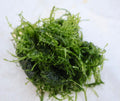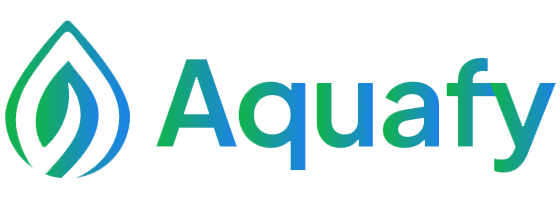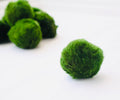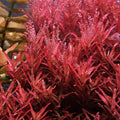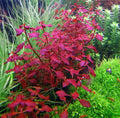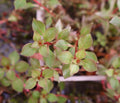How Often Should I Feed My Fish?
It's like humans. If you look at human adults, maybe we eat three times a day versus a newborn baby who's constantly crying for food and might get fed eight times or more per day.
In the same way, I go by a general rule:
-
Adult fish: feed about once a day
-
Juveniles in a grow-out tank: feed twice a day (morning and evening).
-
Babies or newborn fry: feed 3 to 5 times a day or more, if you're around.
That's because they have really tiny stomachs. You want to feed them tiny meals multiple times throughout the day so they're never hungry.
Best Time to Feed Aquarium Fish
I've never really given it much thought because most fish are awake during the daytime—they're diurnal. I like to wait at least 10 to 15 minutes after the aquarium lights come on for the day. That way, all the fish are awake and alert, more likely to attack the food immediately instead of letting it float to the bottom.
If I have more nocturnal species like loaches or plecos, I definitely wait until the aquarium lights are off for the day. That way, the diurnal fish are less active, and the night owls have a better chance of getting more food.
How Much Food Should I Feed?
This is the hardest question. Unfortunately, it really depends:
-
What's the size of the fish?
-
How active are they?
-
Are they a fast swimmer or ambush predator?
-
Are they breeding, fighting all the time?
-
What's the water temperature? Higher temps = faster metabolism = more food
That being said, some articles suggest:
-
Feed 0.5 to 2% (roughly 1%) of the fish’s body weight.
-
For example, a 100g Oscar cichlid gets about 1g of food.
For nano fish, weighing food is really hard. Another method:
-
A fish’s eyeball is roughly the size of its stomach.
-
Feed them the amount that fits in their eye size.
Let’s say I have a school of 25 tetras, and each stomach holds 3 nano pellets. That's about 75 pellets total. If that’s about the size of a dime, I use that to approximate how much of other foods to feed—a dime-sized portion of frozen food, Repashy, etc.
Different foods have different nutritional densities, but it’s a good starting point. I want to make sure those tetras have a slightly rounded abdomen.
If you’re unsure, look up pictures of healthy versions of your fish species online—that’s your goal. Every time I feed, I observe their waistline.
Signs of Overfeeding
-
Swollen belly
-
Excess poop
-
Uneaten food
-
Cloudy water (bacterial bloom)
-
Ammonia/nitrite/nitrate spikes
-
Boom in snails or worms
While fat fish might look cute, obesity can lead to health issues:
-
Fatty liver disease
-
Constipation
-
Bacterial/fungal infections (from bad water quality)
Solutions:
-
Feed less
-
Fast your fish 1–2 times a week.
-
Remove uneaten food.
-
Flakes: remove after 10 minutes
-
Zucchini/Repashy: okay up to 24 hours
Furthermore, make sure no one else is secretly feeding your fish! Fish always look hungry—they’re opportunistic feeders. Even if you fed them an hour ago, they’ll beg.
Tip: Hide the fish food from your friends or roommates!
Signs of Underfeeding
-
Skinny bodies
-
Sunken bellies
-
Pale colors
-
Slow die-off, one by one
These could also be signs of internal parasites. For example, I was feeding my endlers plenty, but they were still fading away. I had to treat them with dewormers. Once treated, they were fine.
What If I Forget to Feed My Fish?
Good news: Adult fish can go a week or more without food. So if you’re going on vacation, no worries.
But baby fish need constant food. For them:
-
Get a pet sitter
-
Or set up an automatic feeder for tiny foods, multiple times per day.
Pro Tip: Put a piece of tape over the feeder opening to make it really small so only a bit of food comes out each time.



